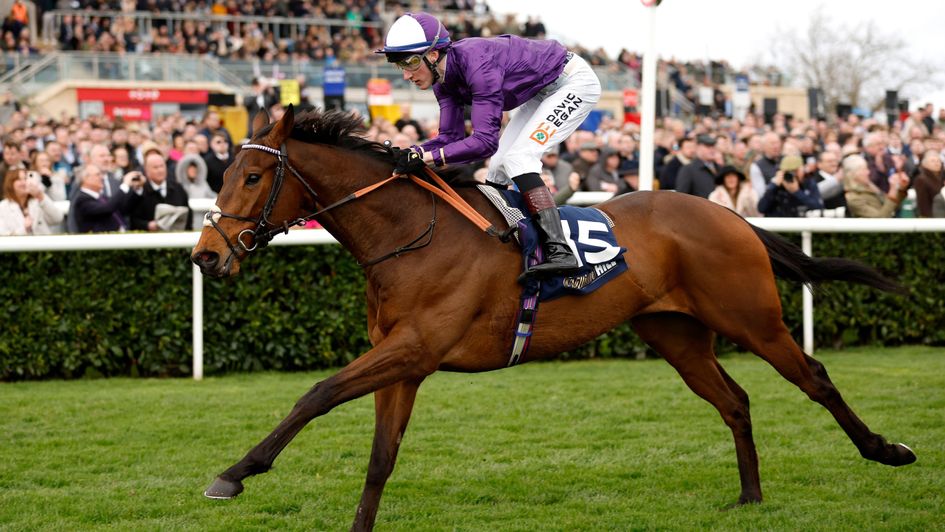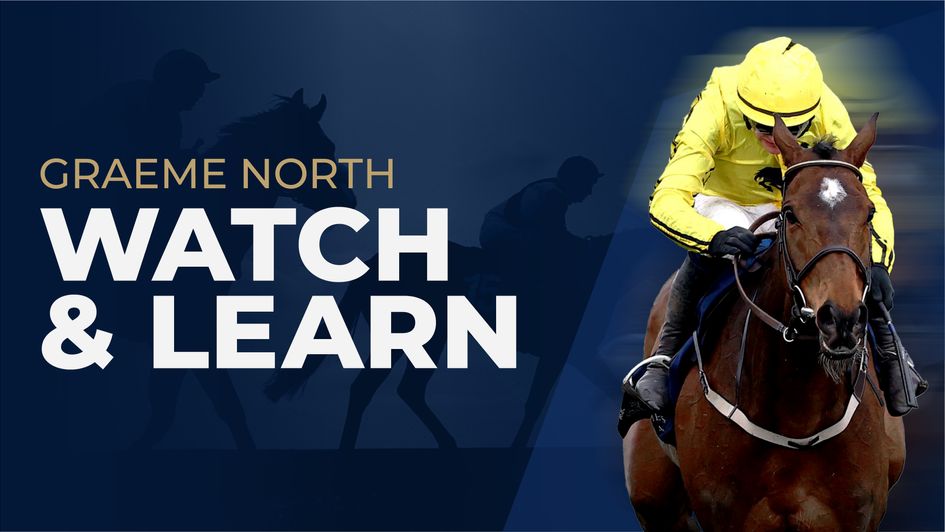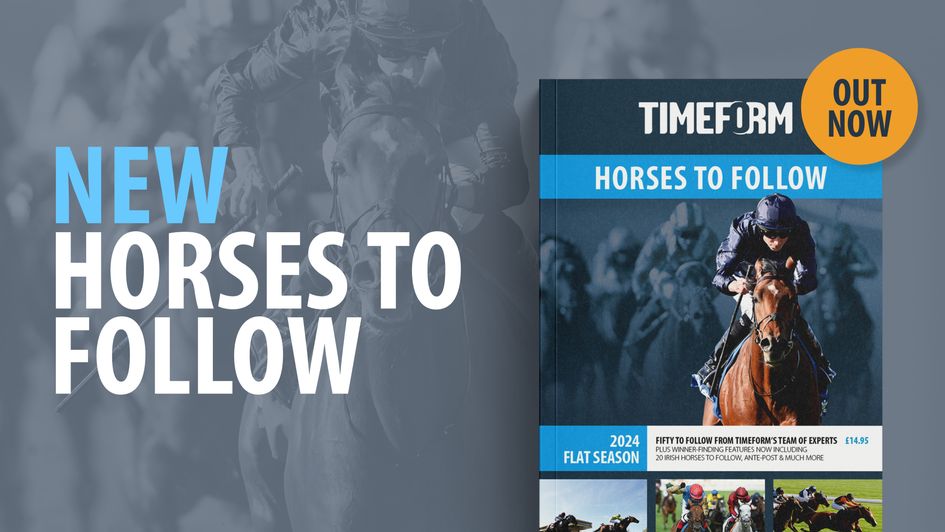Timeform's Graeme North has some interesting observations following the first day of the 2024 Flat season at Doncaster on Saturday.
It might have been the welcome return of the Flat turf racing season at Doncaster on Saturday with some big weekend fields to get stuck into after a relentless winter diet of small fields and uncompetitive jumps action, but much of the five-day pre-meeting media focussed much too little on that and far too much on the Cheltenham Festival despite its conclusion over a week earlier.
Opinions, egos and pop-up straw polls all sparred for validation on how the next renewal might better reflect customer expectation or encourage greater racehorse competition though none were quite as outspoken as those put forward by Dr Richard Newland whose ideas for improvement seemed more than anything else a crude attempt to create a leveller playing field by restricting Irish access.
Ireland might currently be dominating the Festival races for emerging talent but so far as the handicaps are concerned the last time I looked the home team won more of them than the Irish this year, including three of the four chases, despite fielding nine fewer runners. Against this backdrop it’s astonishing that not one of the thirty-three entries for the Irish Grand National at Fairyhouse on Easter Monday, a race with €500,000 in prize money up for grabs, is trained in Britain given so few domestic trained runners are guaranteed a place in the big one at Aintree.
Gordon Elliott, the trainer most often painted as the bad guy in these scenarios by suffocating the opposition, has eleven of the thirty-three entries, not because they have all been aimed at the race, but because of the perverse nature of the handicapping system where winners get off lightly and former glory has-beens take forever to come down the handicap, dictates that he can.
Elliott’s much publicised 14 runners in the Troytown Chase earlier in the season seems to have led to a feeble acceptance by British trainers that he holds all the aces in this division yet results at the last two Cheltenham Festivals suggest that in fact he holds none.
Only one – I repeat, one – of his 23 runners in Cheltenham Festival handicap chases in the last two seasons has finished within ten lengths of the winner and none – zip, zero - finished in the first three. In the same period, one of the three British-trained runners to take in a handicap over fences in Ireland this season scored easily while three of the nine that tried their luck the previous season finished either second or third.
That this belief disconformation still exists with British trainers or those who supposedly help them out with race entries and planning beggars belief. All seven of the British-trained finishers in the Ultima, a race with a quarter of the prize money of the Irish National, as well as five of the remainder who didn’t get round but are still with us, would all have been guaranteed places at Fairyhouse, but it would seem the seductive lure of the Cheltenham Festival, is a long way off being removed just yet.
Indeed, comments made in the week by Cheltenham boss Ian Renton, not least those surrounding the modern-day customer expectation of seven races a day, seemed to acknowledge that sentiment exactly suggesting to me the likelihood of changes being made to the 2025 Festival despite what others might wish for are on a tally with Elliott’s Festival fencing handicap winners since 2020. In a word, nada.
The Flat is back
Anyway, back to Doncaster’s opening Flat salvo and it wouldn’t be a high-profile meeting on the level these days featuring one or more big betting straight course handicaps whose results were guided by a track bias unapparent beforehand, would it? So, what else did we learn from the two days, or principally the first given that’s when the best of the action was?
The opening race on the William Hill sponsored card wasn’t the Brocklesby as it traditionally has been but the Doncaster Mile which unusually for an Arc-owned track featured a significant boost in prize money and duly attracted the Group 1-placed Charyn who was third in the St James’ Palace Stakes and the Sussex Stakes as a three-year-old.
On a day when a strong headwind worked against front runners, Charyn was covered up off a steady pace before scoring readily, but his winning timefigure (just 87) was lower than those registered by either the winners of the Spring Mile or the Lincoln and given his sectional upgrade was minimal too, whether he even needed to show his best form is debateable with all of his rivals so clearly well below theirs.
All the same Charyn is a lot better than this level and on the evidence of the stride length and turnover (available within the At The Races website) he maintained very strongly all the way to the line at Royal Ascot last June I fancy he might just move his form up another level despite his pedigree if tried at a mile and a quarter.
Stride length and turnover isn’t something I’m inclined to spend too much time on in handicaps, but it sometimes opens an interesting window into non-handicaps contested by unexposed horses and with that metric in mind it strikes me that this year’s Brocklesby is very probably a notably weak renewal. Stride length and turnover is influenced by many things including course topography, underfoot conditions and prevailing wind. Conditions for the Brocklesby weren’t as slow as they were in 2023 yet in a similar field size only two horses managed to display a stride length of 23 feet or more compared to six the previous year, while five couldn’t even muster 22 feet compared to just three the year before.
That 2023 renewal produced only one subsequent next-time-out winner on the back of a winning 81 timefigure, so how much relevance this year’s renewal will have several weeks from now remains to be seen given Zminiature’s winning timefigure (75) is very low by historical standards. Amo Racing won the race with subsequent Coventry runner-up and July Stakes winner Persian Force in 2022 and sent out Valadero to be second last year but their representative this time around, Mystical Elegance, never threatened in the first indication that, at the very least the stand rail, wasn’t the place to be.
Overall times and sectionals are one of the best ways of interpreting race results, though perhaps not the most straightforward for even the keenest novice analyst, but there wasn’t much of an edge to be gleaned using either of those metrics on Saturday with most of the times and upgrades (such as they were) matching up to performance ratings.
In such instances traditional visuals can still be invaluable and it looked apparent from both the Spring Mile, where four of the first six ended up racing towards the middle of the course, including a couple who had little cover from the strong wind, and the Lincoln, where five of the first seven spent the majority of their time furthest away from the stand rail, that the closer you were to the stand rail the more disadvantaged you were.

The Lincoln was much the stronger-run of the two races according to the TPD sectionals, the Amo-owned winner Mr Professor running the first five furlongs over three seconds faster than Spring Mile winner Look Back Smiling before finishing a second or so slower as the stronger pace took its toll, the respective overall times resulting in winning timefigures after weight carried and weight for age being 101 for Mr Professor and 91 for Look Back Smiling, which were career bests for both.
Look Back Smiling is something of an enigmatic character who can ruin his chance at the start, but he was much better away on Saturday than he usually is and, travelling strongly throughout, ended up running a faster final furlong than Charyn though not quite so fast as runner-up Thunder Roar. Sixth-placed Helter Skelter caught the eye with the fastest third-last furlong and the third-fastest penultimate furlong before veering badly off a true line bereft of company and he’s surely well handicapped off 72 bearing in mind that effort and his obvious inexperience with this being just his fifth run.
Look Back Smiling’s stable-companion One Night Thunder is also one to bear in mind from the Lincoln. This would have been the plan for many months so I’m not inclined to blame lack of race fitness too much but cutting out the strong gallop into the wind closest to the stand rail and still being there with two furlongs was a fine effort in the circumstance and connections will be very pleased he’s been dropped a very generous 2lb.
Montassib’s win in a 107 timefigure in the Cammidge Trophy wasn’t far off his 115 performance rating and that augurs well for the prospects of Marshman who led for much of the final furlong over a trip beyond his optimum judged on his efforts last year. Look out for him if he turns up in France where there are many more opportunities to race over five and a half furlongs than there are here.
Moon Over Miami and Harper’s Ferry came almost ten lengths clear in a fast time (97 timefigure) in the mile-and-quarter maiden with the stoutly-bred winner looking a particularly good prospect for Ralph Beckett, but my eye was drawn to third-placed newcomer Liberty Coach who demonstrated a remarkable (given the conditions) twenty-five foot stride length if the TPD data is to believed and looks a useful prospect for the team who sadly lost crack sprinter Highfield Princess at the weekend.
There was a lot less wind about on Sunday’s (less interesting) card and the dynamic of the races changed with four of the winners making all the running. Once again winning timefigures and sectional upgrade combinations made plenty of sense with the best figures (96 and 89 respectively) being recorded by Knebworth in the six-furlong handicap and King Of Spain in the mile-and-a-quarter handicap for three-year-olds.
The latter, a second winner of the weekend for Gemma Tutty, is by far the more interesting of the pair being a half-brother to Mostly Cloudy who improved in leaps and bounds for her in her first season training before being sold to Australia. It’s not difficult to see this fellow make light of a big rise in the weights much as Mostly Cloudy did on more than one occasion with a step up to a mile and a half sure to draw out plenty of improvement given he was only just getting going in the final furlong, which he ran faster than all but two of the winners on the card despite his race being much more truly run and over further than most.
Specialise with eye on the prize
Finally, something different to end with now the new Flat season is upon us. I’m often asked at this time of year what advice I can give to those who have some time to devote to form study and want to best use that time to cover as much as possible with the aim, hopefully, of turning a profit. With so much wall-to-wall racing these days the answer I always give (for all I use a few other short cuts besides) is specialisation.
By this, however, I don’t mean the specialisation others usually talk about – concentrating on distinct divisions such as two-year-olds or sprint handicappers, for example – as the workload is either all or nothing dependent on the time of year and it’s easy to get demoralised.
What I define by specialisation is putting yourself in the mind of a trainer by getting to know the horses of three or four of them intently by studying past performance videos. By doing this, you’ll not only end up with an interest across many types of races with a much smaller and more workable number of horses but develop a far superior knowledge of those horses than pretty much anyone else who has cause to come across them and, in theory, know instinctively when those horses are ready to strike and represent good value at the prevailing odds.
For those interested, the four trainers I like to focus on, a mix of ‘still under the radar’ progressive stables and more established ones none of whom are ‘betting yards’ either, are Daniel & Claire Kubler, today’s column star trainer Gemma Tutty (as regular readers will know), David Menuisier (who is always worth noting when he takes horses to France) and Ralph Beckett.
For those with a notebook handy, Beckett has an interesting runner at Kempton on Wednesday in the shape of Golden Myrrh who ran the last three furlongs at Newbury on his only start so far just a tenth of a second slower than the subsequent Group 1 winner and top-two-year-old Rosallion despite finishing only fifth, while the Kublers have a very interesting recruit they picked up from Richard Fahey, Salamanca Lad, a horse who had a couple of positive mention’s in this column last season, entered at Southwell on Sunday.
More from Sporting Life
- Racecards
- Fast results
- Full results and free video replays
- Horse racing news
- Horse racing tips
- Horse racing features
- Download our free iOS and Android app
- Football and other sports tips
- Podcasts and video content
Safer gambling
We are committed in our support of safer gambling. Recommended bets are advised to over-18s and we strongly encourage readers to wager only what they can afford to lose.
If you are concerned about your gambling, please call the National Gambling Helpline / GamCare on 0808 8020 133.
Further support and information can be found at begambleaware.org and gamblingtherapy.org.










